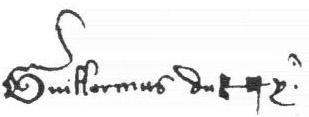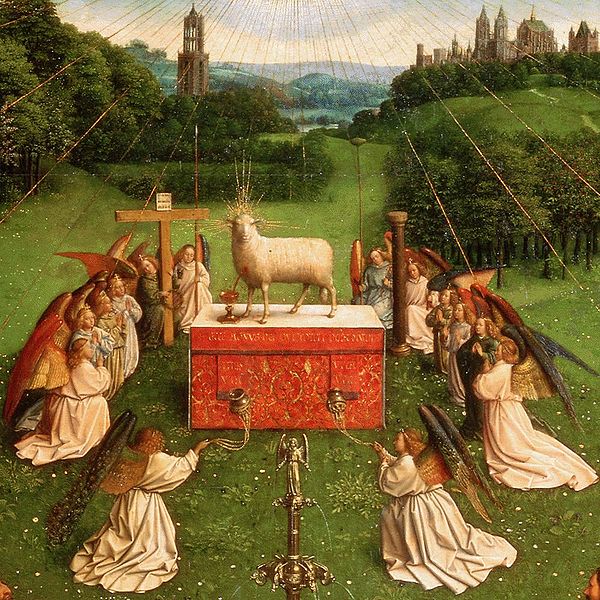

|
One of the most important achievements in sacred music of the Early Renaissance was the development of the cyclic mass, a setting of the ordinary of the mass in which the different sections: Kyrie, Gloria, Credo, Sanctus and Ite Missa Est, were unified musically. Typically this unity came from the use of the same cantus firmus for each section of the Mass. In its earliest incarnation the cantus firmus came from particular segments of plainchant; later composers began to use secular songs and melodies of their own invention. The way they used these melodies also changed over time: works from the Early Renaissance tend to use the cantus firmus as a scaffolding, confinign it to a particular voice part, while composers of the Later Renaissance tend to treat the cantus firmus as a repository of musical motives. Dufay's Missa L'Homme Arme is one of the earliest of the nearly fifty cyclic Masses that use the popular secular song "L'Homme Arme" as its cantus firmus. Notice how nicely Dufay exploits the similarities between the ABA forms of both the Kyrie (Kyrie Eleison (A); Christe Eleison (B); Kyrie Eleison (A)) and the "L'Homme Arme" melody. The first line of "L'homme arme" is the cantus firmus of the first Kyrie; the second line, the Christe and the third line, the return of the Kyrie. The work is clearly in an early Renaissance style. As befits the style there is little to no imitation between the individual polyphonic voices; long melismas in the vocal line and a general lack of coordination between text and music. The words are stretched out over long melismas and the text is nearly incomprehensible. Dufay and other composers of the Early Reniassance tend to place more importance on countrapuntal (horizontal) relationship of the individual voices than on the harmonic relations (the vertical relations) between the individual voices. In the other movements of the Missa L'Homme Arme, Dufay uses both more esoteric, medieval compositional techniques, such as encoding riddles into the tenor part; as well as more modern, Renaissance techniques, such as having the cantus firmus escape from the shackles of the tenor part and begin to pervade all four voices. |
 Jan van Eyck's Ghent Altarpiece |
| Kyrie Eleison | 0:00 | Kyrie I: 3-voice opening, triple meter, melismatic. |
| Kyrie Eleison | 0:14 | Kyrie I (continued): Entrance of L'Homme Arme tune in Tenor corresponding to "L'homme, l'homme, l'homme arme" in original. Returns to three voice texture of before. |
| Kyrie Eleison | 0:49 | Kyrie I (continued): Entrance of remainder of first line of "L'homme arme" corresponding to "L'homme arme doibt on doubter." Choir then continues in free counterpoint. |
| Christe Eleison | 1:20 | Christe: 2-voice opening, duple meter, extremely melismatic. |
| Christe Eleison | 2:23 | Christe (continued): Tenor enters with Cantus firmus, followed by bass. Corresponds to end of first line and entire second phrase of original tune. |
| Kyrie Eleison | 3:20 | Kyrie II: 3-voice opening, triple meter, very melismatic. |
| Kyrie Eleison | 4:04 | Kyrie II (continued): Tenor enters with remainder of "L'Homme arme" tune. |
| Kyrie Eleison | 4:33 | Kyrie II (continued): Coda on final phrase of "L'homme arme" which appears at a faster tempo in the tenor. |
Translation
|
 |